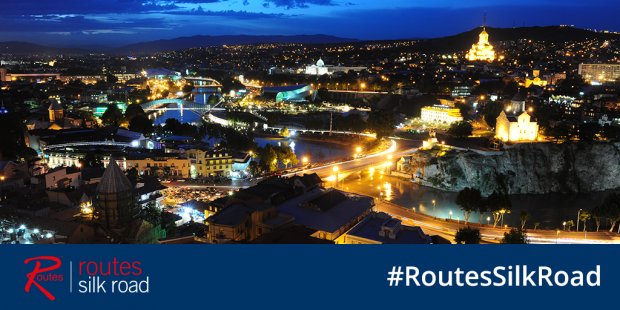Routes Silk Road 2015: Tour 2

Complimentary Tour: Mtskheta (Old Capital of Georgia)
In partnership with our host, we are providing comlimentary tours during Routes Silk Road so you can experience all that Tbilisi has to offer:
Date: Saturday 4 July
Time: 11:00 – 16:00
Mtskheta
One of the oldest cities of Georgia is located about 20 kilometers north of Tbilisi at the confluence of the Aragvi and Mtkvari rivers. The city is considered to be one of the oldest continuously inhabited cities in the world and today is populated by around 19 500 people. The town has an extraordinary importance to the Georgian Nation as it was the capital of the eastern Georgian kingdom of Iberia from the 3rd century BC to the 5th century AD. Mtskheta was the site of Georgia’s adoption of Christianity in 334 and remains to be one of the headquarters of the Georgian Orthodox Church. Mtskheta is of primary interest to any visitor interested in Georgian history and/or Orthodox Christianity.
Due to its historical significance and numerous ancient monuments, the “Historical Monuments of Mtskheta” became a UNESCO World Heritage Site in 1994. The historic churches of Mtskheta are outstanding examples of medieval religious architecture in the Caucasus. They represent the high artistic and cultural level attained by this ancient kingdom.
Jvari Monastery
“The Church of the Holy Rood” is situated on top of the hill on the left bank of the Aragvi River. According to local history, in the early fourth century a wooden cross was erected over a pagan sanctuary on a rocky mountaintop overlooking Mtskehta, the former capital of the Georgian Kingdom of Kartli - Iberia. The construction of the cross symbolized the fall of paganism and rise of Christianity in Georgia.
In 545, a cruciform church, known as the Small Church of Jvari, was built just north of the cross. Between 586 and 605, a larger church was constructed directly above the site of the wooden cross, the base of which is still visible inside the church. Exceptional relief sculptures decorate the exterior facades of the Great Church. Their fine proportions and remarkable technique distinguished the sculptures from the earlier bas-relief carving common in the region. In 2004, the monastery was placed on the UNESCO World Heritage List as part of the “Historical Monuments of Mtskheta” and was added to the UNESCO List of World Heritage in Danger in 2009.
Svetitskhoveli
The Living Pillar Cathedral is known as the burial site of Christ’s mantle and was the site for coronation and burial of the kings of Georgia.
The Svetitskhoveli complex in the center of the town includes the 11th century cathedral, the palace and gates of the Katolicos Melchizedek from the same period, and the 18th century gates of Erekle II. The cathedral is domed and cruciform in plan. The interior was originally covered with wall paintings, but these were whitewashed over and only recently have fragments of them been revealed again. The facades are ornamented with decorative arcading which unites the separate components of the structure. Severely damaged by Tamurlaine, it was rebuilt in the 15th century; more serious alterations took place in the 1830s on the occasion of a visit to the Caucasus by Tsar Nicholas II, when richly ornamented galleries and subsidiary chapels were ruthlessly swept away.


